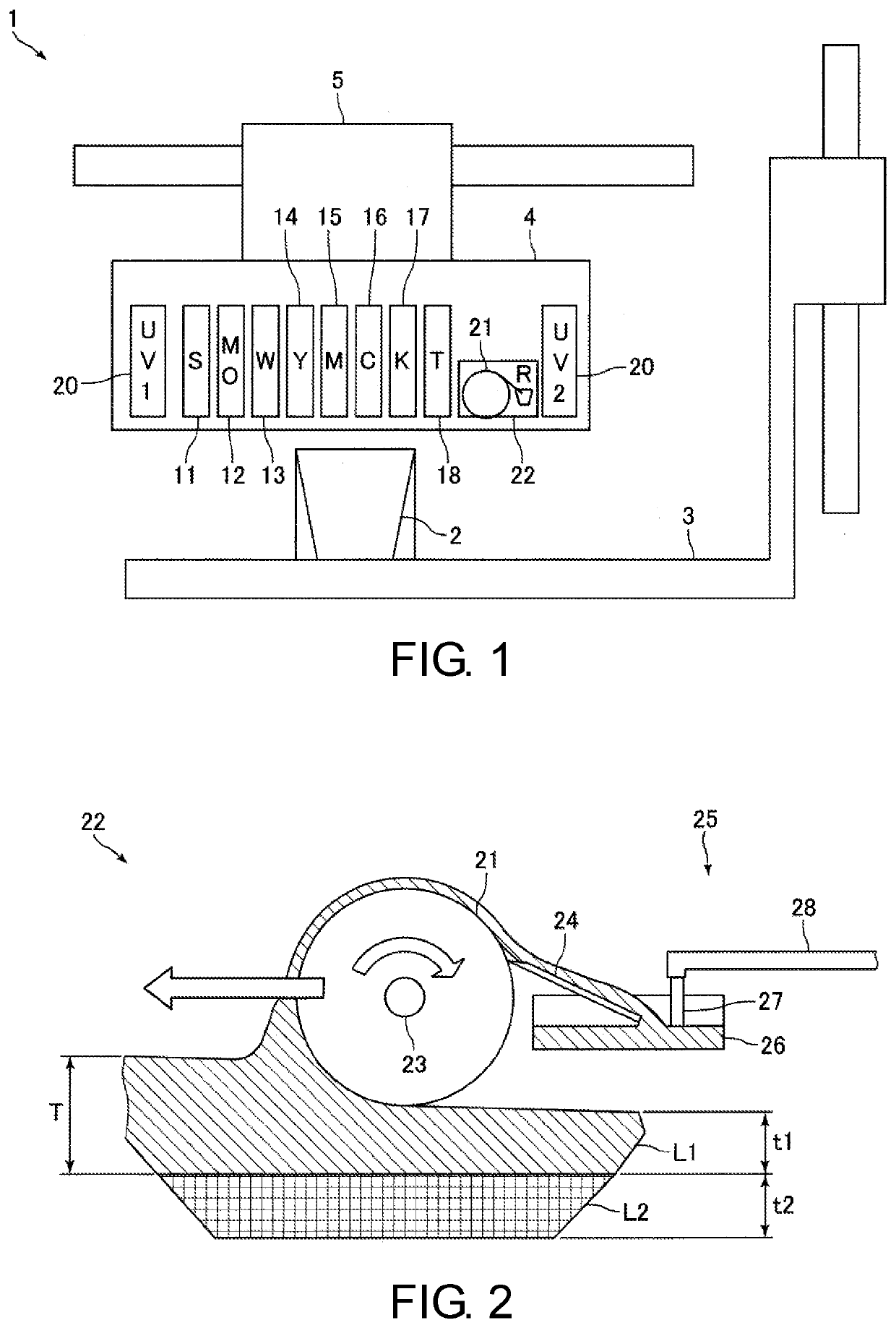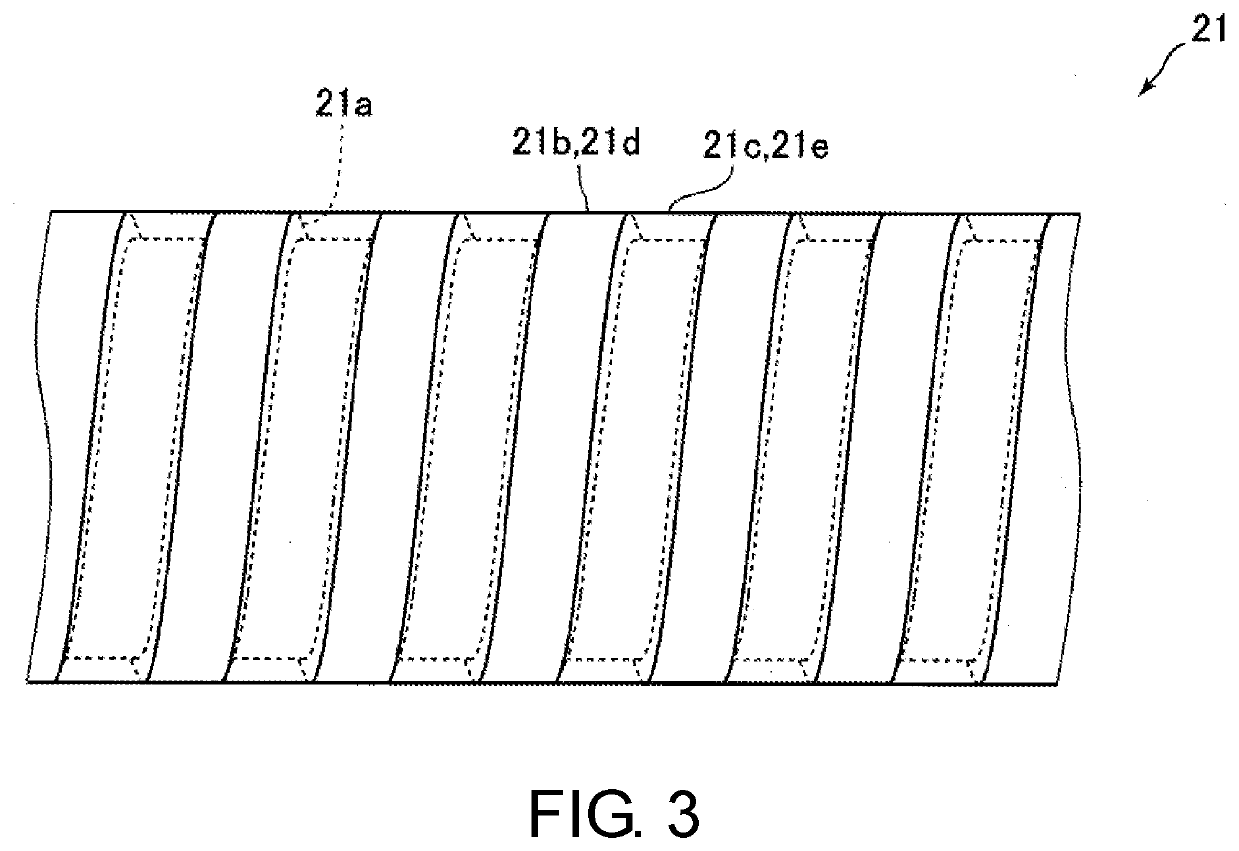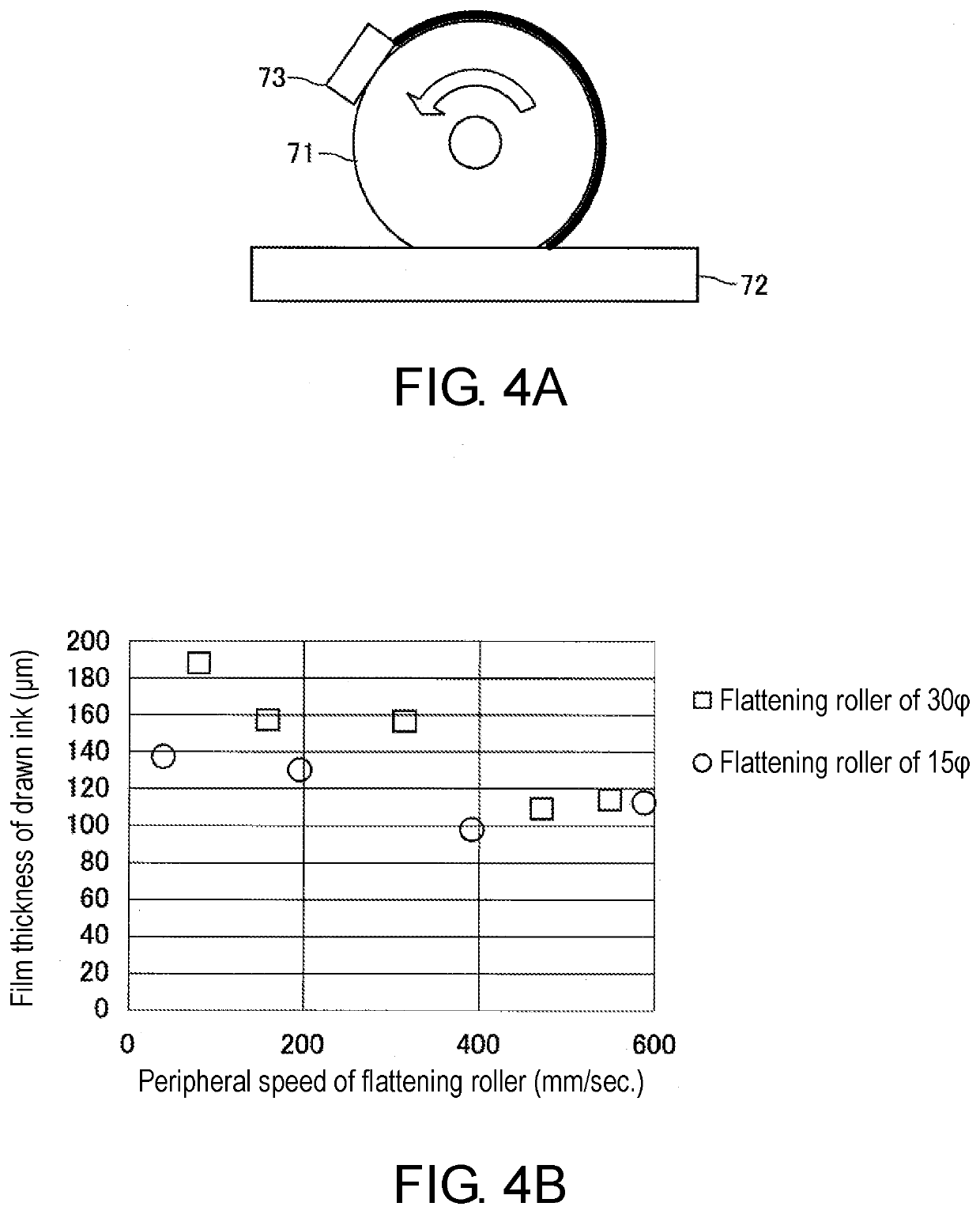Shaping apparatus
a technology of shaping apparatus and flattening roller, which is applied in the direction of adding manufacturing processes, manufacturing tools, and applying layer means, etc., can solve the problems of affecting the shape the deformation of the three-dimensional object in the middle of shaping, and the failure of the three-dimensional object to achieve the effect of suppressing the occurrence of shaping failures of the three-dimensional obj
- Summary
- Abstract
- Description
- Claims
- Application Information
AI Technical Summary
Benefits of technology
Problems solved by technology
Method used
Image
Examples
first modified example
[0056](First Modified Example of Flattening Roller)
[0057]FIG. 5 is a side view of the flattening roller 21 according to another embodiment of the present disclosure. FIG. 6 is an enlarged view describing a configuration of portion E in FIG. 5. FIG. 7 is a cross-sectional view describing a configuration of the flattening roller 21 shown in FIG. 5. FIGS. 8A to 10B are enlarged views describing the configuration of the flattening roller 21 according to another embodiment of the present disclosure. In FIGS. 8A to 10B, the configuration of the part corresponding to portion E of 5 is shown.
[0058]As shown in FIG. 6, a plurality of ink adhering surfaces 21b (white parts in FIG. 6) and a plurality of liquid repellent surfaces 21c (black parts in FIG. 6) formed on the outer peripheral surface of the flattening roller 21 may be arranged in a checkered pattern. That is, the ink adhering portions 21d and the non-ink adhering portions 21e may be arranged in a checkered pattern. In a modified exam...
second modified example
[0066](Second Modified Example of Flattening Roller)
[0067]In the embodiments and modified examples described above, the recess 21a may not be filled with a material having liquid repellency. In this case, the recess 21a is the non-ink adhering portion 21e, and the cured ink does not adhere to the recess 21a even if the upper surface of the cured ink and the flattening roller 21 come into contact with each other when shaping the three-dimensional object 2 by the multi-pass method. That is, in this case, the ink adhering portion 21d including the ink adhering surface 21b and the non-ink adhering portion 21e from the recess 21c are formed on the outer peripheral surface of the flattening roller 21.
[0068]In this case, even if the upper surface of the cured ink and the outer peripheral surface of the flattening roller 21 come into contact with each other when shaping the three-dimensional object 2 by the multi-pass method, a part of the cured ink will not be scraped off by the non-ink ad...
PUM
| Property | Measurement | Unit |
|---|---|---|
| thickness | aaaaa | aaaaa |
| thickness | aaaaa | aaaaa |
| outer diameter | aaaaa | aaaaa |
Abstract
Description
Claims
Application Information
 Login to View More
Login to View More - R&D
- Intellectual Property
- Life Sciences
- Materials
- Tech Scout
- Unparalleled Data Quality
- Higher Quality Content
- 60% Fewer Hallucinations
Browse by: Latest US Patents, China's latest patents, Technical Efficacy Thesaurus, Application Domain, Technology Topic, Popular Technical Reports.
© 2025 PatSnap. All rights reserved.Legal|Privacy policy|Modern Slavery Act Transparency Statement|Sitemap|About US| Contact US: help@patsnap.com



